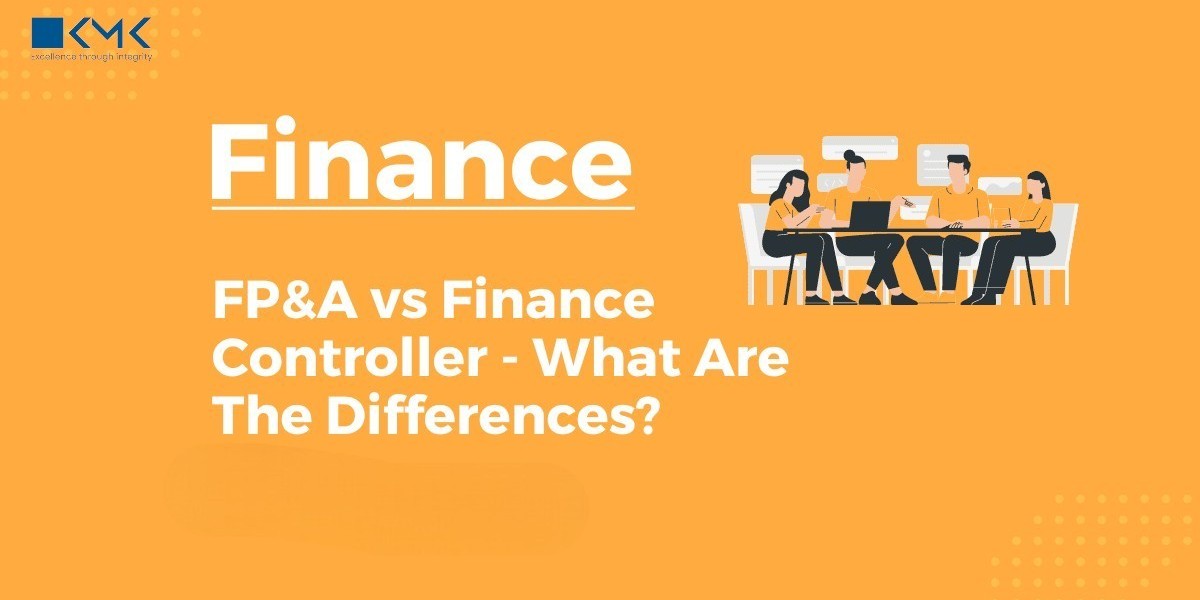In today’s fast-paced business environment, finance teams are no longer just about crunching numbers. They are expected to guide strategy, ensure compliance, and provide insights that help organizations stay competitive. Within U.S. finance departments, two roles stand out in this mission: the Financial Planning and Analysis (FP&A) manager and the financial controller. While the FP&A manager vs financial controller discussion often centers around their differences, the reality is that their collaboration is what drives financial excellence. So, how do these two professionals work together, and why is their partnership so important for U.S. companies? Let’s dive in.
FP&A Manager vs Financial Controller: Understanding the Roles
Before exploring their collaboration, it’s important to define each role clearly.
What Does an FP&A Manager Do?
FP&A managers focus on the future. They use financial data to provide insights and create forecasts that guide business decisions. Their key responsibilities include:
Building budgets and forecasts
Conducting scenario analysis
Measuring performance against KPIs
Advising executives on strategic decisions
In short, FP&A managers act as strategic partners, helping leadership understand where the business is headed.
What Does a Financial Controller Do?
Controllers, by contrast, focus on accuracy and compliance in the present. Their responsibilities typically include:
Overseeing accounting operations
Producing financial reports and statements
Ensuring compliance with tax laws and accounting standards
Managing audits and internal controls
Controllers are the financial guardians, ensuring the numbers are correct and reliable.
Key Differences Between the Two Roles
The FP&A manager vs financial controller debate highlights distinct approaches:
Focus Area: Controllers emphasize past and present data; FP&A managers project future performance.
Mindset: Controllers are compliance- and accuracy-driven; FP&A managers are strategy- and growth-focused.
Outputs: Controllers deliver reports and audit-ready data; FP&A managers deliver insights, forecasts, and recommendations.
Think of the controller as maintaining the engine of a car, while the FP&A manager maps out the road ahead. Both are essential, but for different reasons.
How FP&A Managers and Controllers Collaborate
In U.S. finance departments, these two roles often overlap during critical processes. Here’s how their collaboration unfolds:
1. Budgeting and Forecasting
Controllers provide accurate financial records and expense data.
FP&A managers use this data to prepare forecasts and align budgets with strategic goals.
Together, they ensure budgets are realistic and actionable.
2. Financial Reporting
Controllers generate the reports that reflect financial accuracy.
FP&A managers interpret those reports to identify patterns and advise executives.
This creates a balance of compliance and strategic storytelling.
3. Cash Flow Management
Controllers oversee day-to-day cash operations and reconcile balances.
FP&A managers project future cash needs to support growth or investment.
Collaboration here prevents liquidity issues while enabling forward planning.
4. Risk Management
Controllers detect compliance or internal financial risks.
FP&A managers assess external risks such as market shifts and competition.
Together, they give companies a full picture of risks and opportunities.
5. Strategic Decision-Making
Controllers establish a reliable financial baseline.
FP&A managers use that baseline to guide leadership toward sustainable growth.
Why Collaboration Matters for U.S. Companies
In American businesses—whether startups, mid-sized firms, or large enterprises—finance teams are expected to be both precise and visionary. Without collaboration between FP&A managers and controllers, companies risk:
Being too focused on the past, limiting their ability to plan for the future.
Creating overly ambitious strategies without a reliable financial foundation.
When both roles align, U.S. companies gain:
Accurate budgets and forecasts
Stronger compliance and governance
Better communication between finance and executives
Agility in adapting to market changes
The Impact of Technology on Collaboration
Modern finance departments in the U.S. are increasingly powered by automation, AI, and cloud-based solutions. These tools have reduced the manual workload of controllers, freeing them to focus more on oversight. Meanwhile, FP&A managers use advanced analytics and predictive modeling to sharpen their insights.
Instead of creating silos, this evolution is strengthening collaboration. Controllers provide high-quality, accurate data, while FP&A managers leverage that data for analysis and strategy. Together, they transform finance into a value-adding partner across the business.
How Businesses Can Strengthen Collaboration
For U.S. companies aiming to optimize collaboration between these two roles, here are some practical tips:
Hold regular joint meetings: Align forecasts from FP&A with actuals from controllers.
Adopt shared platforms: Use cloud-based systems that both teams can access to reduce data silos.
Define clear responsibilities: Ensure controllers handle compliance and accuracy while FP&A managers focus on strategy.
Promote cross-training: Encourage knowledge sharing so each role better understands the other’s priorities.
FP&A Manager vs Financial Controller: The Balanced Approach
The FP&A manager vs financial controller debate often misses the point. It’s not about choosing one over the other but about recognizing how they complement each other. Controllers safeguard the financial present, while FP&A managers prepare for the future. For U.S. businesses, especially in industries like technology, healthcare, and financial services, the collaboration between these two roles is not just valuable—it’s essential.
Final Thoughts
In U.S. finance departments, the question isn’t whether to prioritize an FP&A manager or a financial controller. The real success lies in their collaboration. Controllers provide the financial backbone with accuracy and compliance, while FP&A managers bring foresight and strategy to the table. When these roles work together, businesses can achieve a balance of reliability and vision. That’s why in the FP&A manager vs financial controller conversation, the smartest answer is: both, working in unison.






